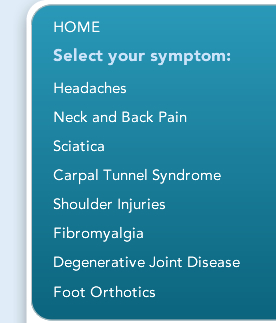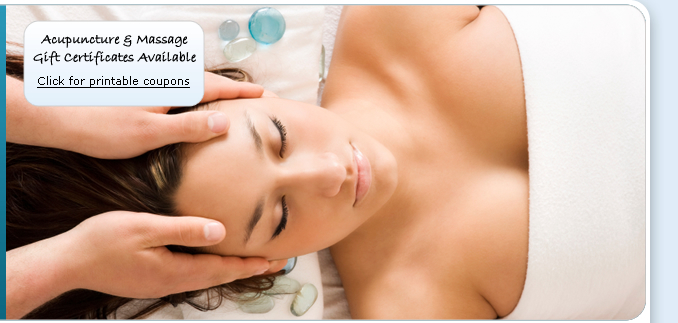172 Cambridge St. | Suite 304 | Burlington, MA 01803 | (781) 221-2295
Introduction
Acupuncture is a principle modality of Oriental Medicine. It focuses on healing within a unified system of body, mind and spirit. As a result, it is generally used in conjunction with herbal, massage, diet and exercise therapies to maximize health, prevent illness and treat disease. Acupuncture originated in China more than 2,500 years ago and spread first throughout Asia, and later to Europe and the Americas. While it has been offered in Asian communities throughout the United States for many generations, it is only since 1970, following the opening of China to the West, that this system of health care has been available to the general population in this country. Acupunture is the treatment choice of over 1 million Americans.
According to Western medicine, the effects of Acupuncture are probably the result of stimulating the nervous system to release chemicals, which may in turn release other hormones producing the desired effects. This theory is supported by the basic research work, which has shown acupuncture's effect on ACTH, insulin, thyroid hormones, growth stimulating hormone, beta-endorphin, white blood cell production and plasma cholesterol levels. It is also believed that Acupuncture may work on an electromagnetic bio-information system. In traditional Chinese Medicine training, Acupuncture is believed to modulate the flow of energy (Qi) in its channels, or meridians, to restore balance.
In the West, acupuncture is usually based on Traditional Chinese Medicine (TCM) -- a modified system of Chinese medicine introduced in the 1950s. TCM teaches acupuncture combined with herbal therapies with less emphasis on moving energy. This type of Acupuncture is often used for medical diseases. Japanese Acupuncture focuses more on the linear flow of Qi, using finer and shorter needles. The French/European interpretation of Acupuncture has produced a style that uses energy channels in addition to focusing elements. It is also associated with Five Elements Acupuncture. The Five Element Theory holds that everything in the universe, including health, is governed by the natural elements of water, wood, fire, earth and metal. In addition, each of the five elements has a corresponding flavor, sound, season, color and weather condition associated with it. This type of acupuncture is often used for more psychological complaints.
There is also acupuncture that focuses on representative systems within a particular area of the body: auricular (ear) acupuncture, Korean hand acupuncture, and scalp acupuncture.
Although electrical stimulation, lasers, heat/moxibustion or pressure may be used to manipulate Qi meridians, treatment with acupuncture needles is the most commonly used technique. In an acupuncture session, acupuncturists may insert and remove the needles quickly or leave them in for longer periods of time, often with the application of heat or electrical impulses. Typically, 3-15 long thin solid needles are placed in various locations according to the meridians, not necessarily at the anatomic site of symptoms. In general, adverse reactions to acupuncture are minimal, although case reports of complications do exist. Bleeding rarely occurs. Infection is minimized by practitioners through the use of sterile disposable needles, which is recommended. Allergic reaction to the stainless steel needles is also rare. Pain varies by patient, but treatment is usually painless or slightly painful. Some patients have temporary exacerbation of their symptoms. For patients receiving auricular treatments, the possibility of chondritis exists, although it is rare.
Regulation and licensing of acupuncturists is state dependent. Most states require demonstration of a health professional degree. The degrees received vary, including licensed acupuncturist (L.Ac.), Oriental Medical Doctor (O.M.D), and physician acupuncturists (MD or DO). When selecting a practitioner, it is important to find one who has been certified as "Dipl. Ac." (Diploma in acupuncture) through a qualifying exam administered by the Accreditation Commission for Acupuncture and Oriental Medicine (ACAOM). Particular licensing requirements vary by state.
History of Acupuncture in America
Over the last few decades, three events have been critical to the expansion of acupuncture practice in the United States: 1) the World Health Organization's publication of its list of diseases that lend themselves to acupuncture treatment (1979); 2) the US Food and Drug Administration's reclassification of acupuncture needles from experimental to standard medical devices (1994); and 3) the National Institutes of Health's Consensus Statement on Acupuncture (1997). In addition, the creation of the National Institutes of Health's Office of Alternative Medicine (1992), later upgraded to the National Center for Complementary and Alternative Medicine (1999) has propelled acupuncture, along with other non-conventional modalities, into the mainstream medical research community.
Milestones: The World Health Organization
The World Health Organization Inter-regional Seminar drew up the following provisional list of diseases that lend themselves to acupuncture treatment (Source: Bannerman R H 1979 Acupuncture: the WHO View. World Health, December, p27-28.). The list is based on clinical experience, and not necessarily on controlled clinical research. Furthermore, the inclusion of specific diseases, are not meant to indicate the extent of acupuncture's efficacy in treating them.
- Upper Respiratory Tract
- Acute Sinusitis
- AcuteRrhinitis
- Common Cold
- Acute Tonsillitis
- Respiratory System
- Acute Bronchitis
- Bronchial Asthma (most effective in children and in patients without complicating diseases)
- Disorders of the Eye
- Acute Conjunctivitis
- Central Retinitis
- Myopia (in children)
- Cataracts (without complications)
- Disorders of the Mouth
- Toothache (post-extraction pain)
- Gingivitis
- Acute and Chronic Pharyngitis
- Gastro-intestinal Disorders
- Spasms of Esophagus and Cardia
- Hiccough
- Gastroptosis
- Acute and chronic gastritis
- Gastric hyperacidity
- Chronic duodenal ulcer (pain relief)
- Acute duodenal ulcer (without complications)
- Acute and chronic colitis
- Acute bacillary dysentery
- Constipation
- Diarrhea
- Paralytic ileus
- Neurological and Musculo-skeletal Disorders
- Headache and Migraine
- Trigeminal Neuralgia
- Facial Palsy (early stage, i.e., within three to six months)
- Pareses (following a stroke)
- Peripheral Neuropathies
- Sequelae of Poliomyelitis (early stage, i.e., within six months)
- Meniere's Disease
- Neurogenic Bladder Dysfunction
- Nocturnal Enuresis
- Intercosral Neuralgia
- Cervicobrachial Syndrome
- Frozen Shoulder
- Tennis Elbow
- Sciatica
- Low Back Pain
- Osteoarthritis

![]() Read our client testimonials | Send in your own: Email us at Life4orce4@comcast.net
Read our client testimonials | Send in your own: Email us at Life4orce4@comcast.net


